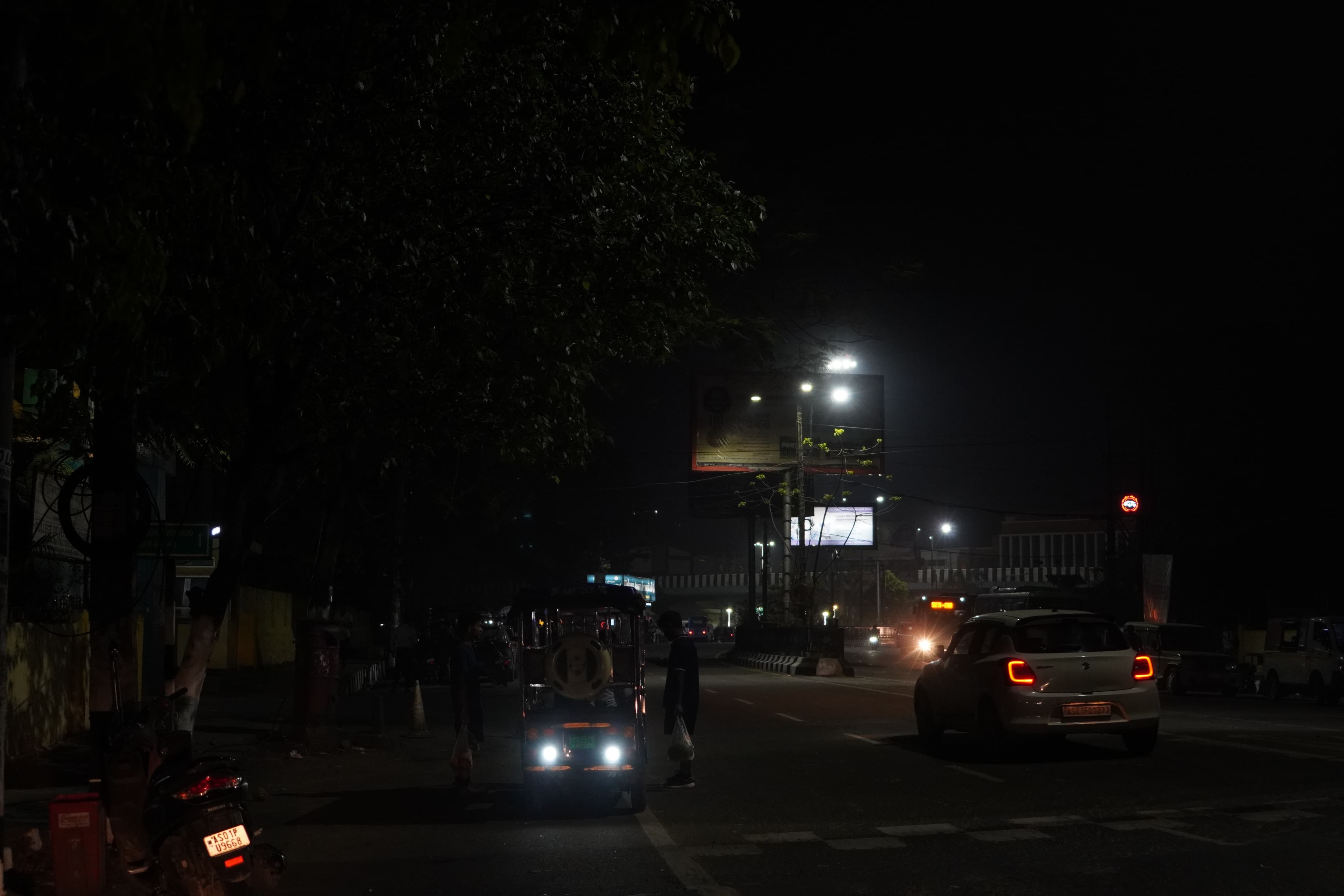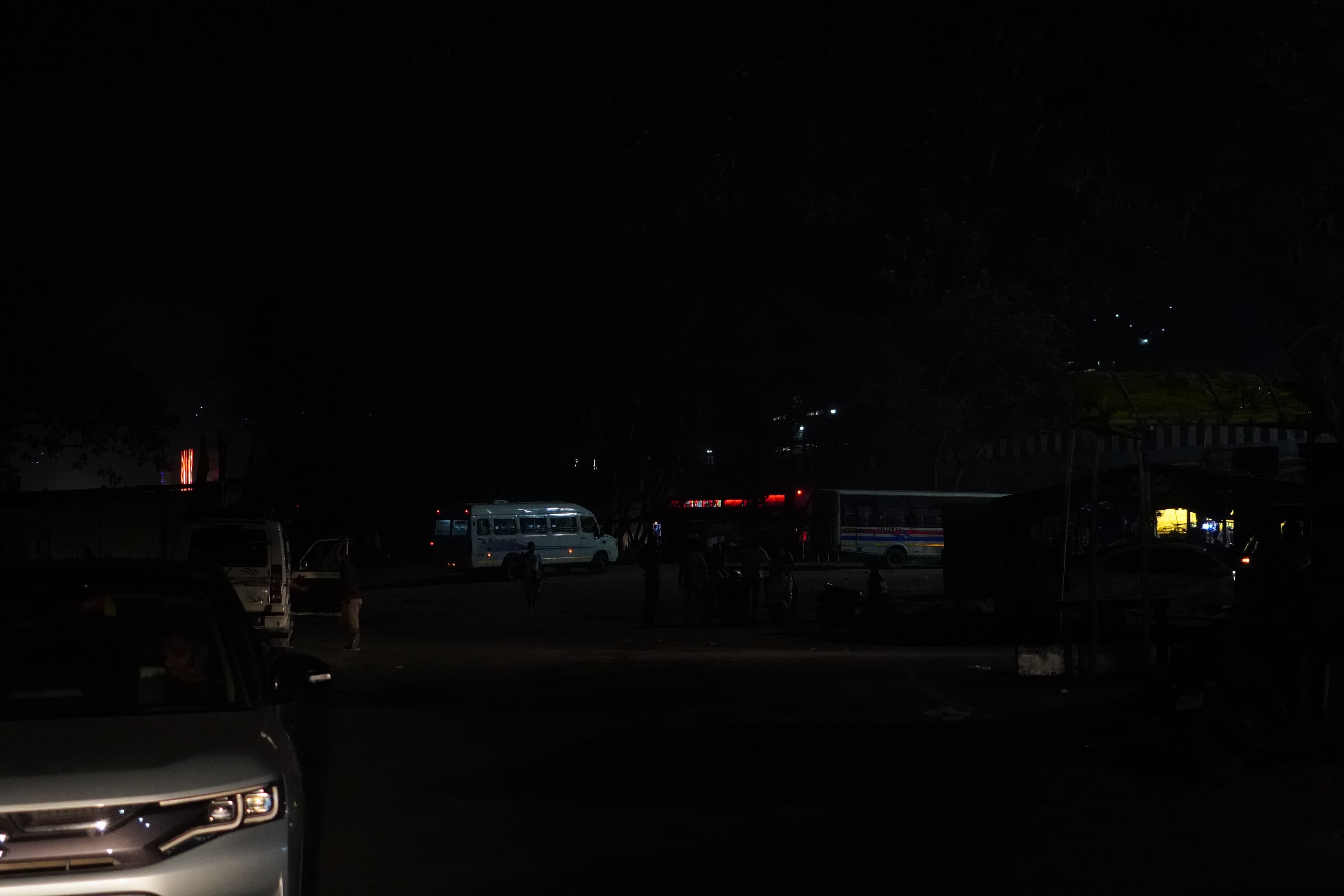Khanapara stands as a symbol of civic failure, and where safety is at a premium
As evening falls, the buzz of traffic around Khanapara turns into a blur of headlights, impatient horns, and frayed tempers. A gateway to Guwahati city, this strategic transit point now stands as a zone of anxiety for many - a place where harassment, petty crime, civic neglect, and utter disorder have taken root.
ALSO READ: Overcharging, Intimidation: Guwahati Citizens Bear The Brunt At Parking Lots
The GPlus team visited the area over several days, speaking to regular commuters, local vendors, and law enforcement officials. What emerged from the conversations and ground observations was a disturbing pattern—Khanapara is no longer just a busy junction; it has turned into a hotspot of insecurity and unmanaged chaos.
Right outside the Assam Veterinary College, where streetlights often flicker or stay off entirely, darkness covers not only speeding vehicles but also unsafe encounters for lone pedestrians. At the bus stop across the road, daily passenger Papori Dihingia shared a chilling personal account. “I was waiting for my night bus when two guys started following me. Wherever I stopped, they stopped. I stood near a pan shop thinking the crowd would help, but they kept coming. They started passing comments and eve-teasing me. I was terrified.”
The fear Papori articulated is not isolated.
This area, which should ideally function as a safe and well-monitored transport link between Assam and other states, has become a playground for illicit activity. Regular commuters now travel with a sense of caution, and not without reason.
For Hitesh Bora, who travels through Khanapara almost every day, the risks aren’t limited to harassment or theft. He points to the basic lack of infrastructure that only adds to the sense of danger. “The streetlights don’t work most nights, especially near the Veterinary College. It’s pitch dark. Accidents happen frequently. Khanapara feels cursed sometimes,” he told GPlus. “I really don’t understand why the authorities never treat this seriously.”
Many commuters also raised concerns about how dimly lit pockets make it easier for criminal activity to flourish. On one side of the main road, a group of makeshift stalls glows under battery-powered lamps. On the other side, shadows conceal more than just pedestrians—according to multiple accounts, these are the corners where illegal activity often takes place.

Another commuter seeking anonymity described what he saw just a few weeks ago: “There was a group of boys, clearly dealing something. I knew it was drugs. When they noticed I was watching them, they started walking toward me to threaten me. Luckily, my bus arrived right then.”
He isn’t alone. Smuggling, petty theft, and suspected drug trafficking have long been whispered issues in Khanapara. For residents and travellers alike, the whispers have grown louder and more alarming.
On April 10, an incident confirmed what many have long suspected—that Khanapara is becoming a refuge for those looking to stay off the radar.
A minor from Dhemaji, who had allegedly stolen sacred items from the historic Bhugpur Satra in Titabor after failing his Class X exams, was traced to an under-construction building in Khanapara. Acting on a tip-off, a team from Dispur Police Station apprehended the child in conflict with law.
When caught, police recovered ₹29,153 in cash, three gold rings, a small gold belpat, and various pieces of silver and copper. While the boy’s case is being treated under juvenile law, his presence in Khanapara raises serious questions: Why are minors with criminal backgrounds ending up in this zone? What makes Khanapara the hiding place?

In a city that is growing rapidly, the importance of maintaining order at major transit points cannot be overstated. But in Khanapara, civic agencies seem to be looking the other way. The lack of functioning streetlights is a basic, yet recurring issue.
However, talking to GPlus, an official from Guwahati Utilities Company Limited (GUCL) said, “Lights were off due to malfunction of the transformer. A new transformer will be replaced soon.”
But commuters say the problem isn’t new—and it isn’t just one transformer. There are entire stretches along the Khanapara-Jorabat corridor that remain dark for days, they claim.
Talking to GPlus, a senior official from Dispur Police Station said, “We do have patrol teams in Khanapara. Whenever we suspect illegal activity, we investigate. Just recently, we brought in two to three boys on suspicion.”
While patrol vehicles are visible occasionally, many commuters feel they are too few and far between. Some also allege that enforcement is selective, especially during the evenings, when harassment and petty fights between bus and taxi operators are at their peak.
“There are no rules here,” said another commuter. “Even if I show my bus ticket, other drivers will come and try to drag me into their vehicles. They offer lower fares but force you to go with them. It’s scary and aggressive, especially for women.”
As if safety concerns weren’t enough, the daily traffic situation has made this corridor a commuter’s nightmare. What should ideally be a 15-minute drive from Jorabat to Khanapara now takes up to three hours during peak hours.
The tailbacks begin as early as 7 AM, and continue until late in the night. Long queues of trucks, buses, and personal vehicles stretch across the hills leading into the city. Traffic policemen are seen managing the flow, but many intersections remain unmanned.
Talking to GPlus, Rajib Sharma, a daily commuter in Khanapara said, “It’s frustrating. What used to take just 15 minutes now takes more than two hours. I’ve seen parents walking their kids back home because school buses got stuck. It’s chaos every morning,”
Some schools located near the corridor have even announced impromptu holidays after teachers and students were stuck in jams for hours. Several airport-bound passengers have reportedly missed their flights due to the congestion.
Khanapara is not just another intersection, it’s the first impression of Guwahati for visitors entering from Meghalaya and Upper Assam. It's also a lifeline for thousands of daily commuters.
Yet, it has become a place people dread passing through.
The question now is how long will daily commuters, students, and residents continue to suffer in silence? With increasing safety concerns, poor lighting, unchecked criminal activity, and traffic that holds the city hostage for hours, who is truly accountable for this mess? As Khanapara remains one of the busiest gateways to Guwahati, can the authorities afford to turn a blind eye any longer?



